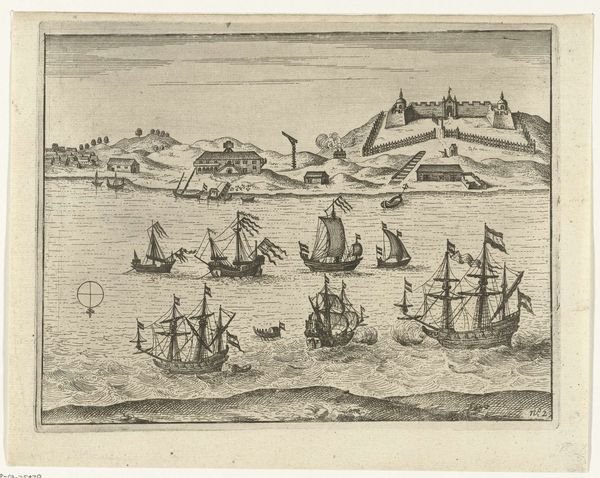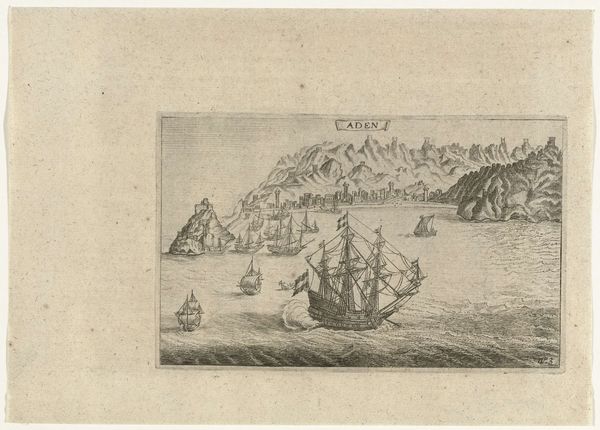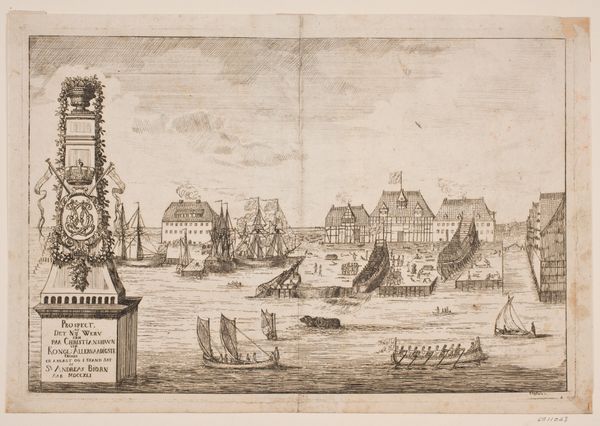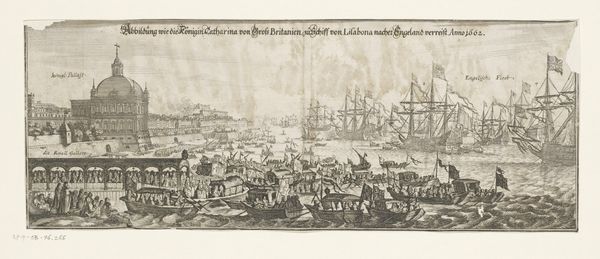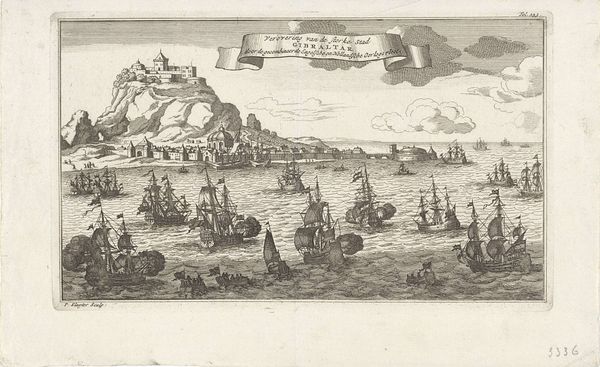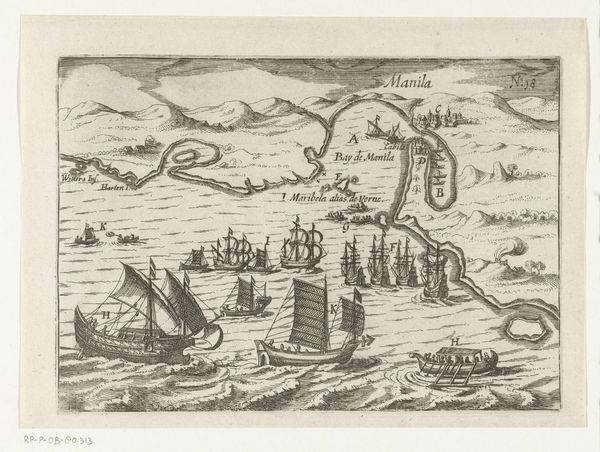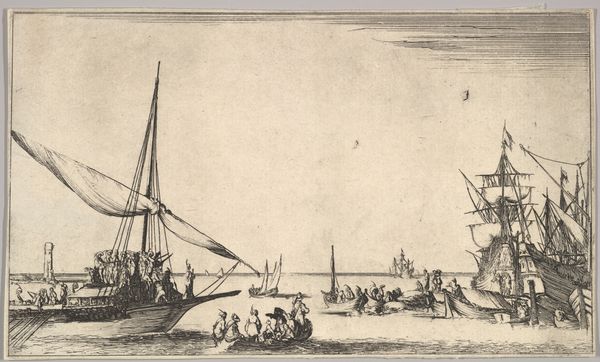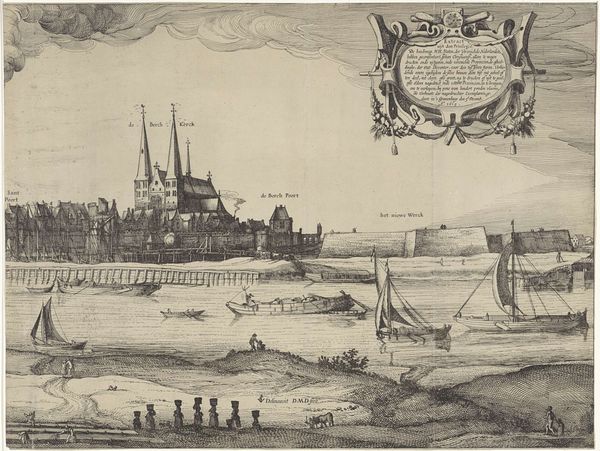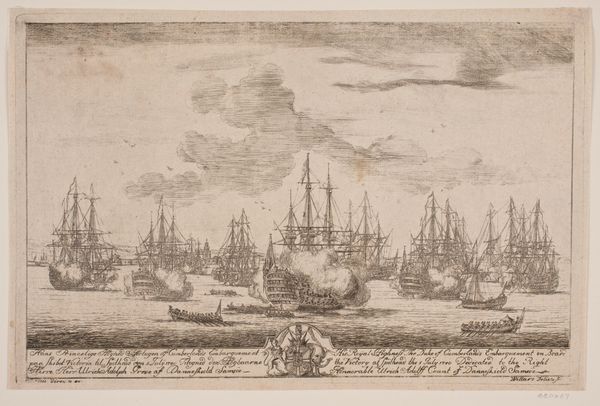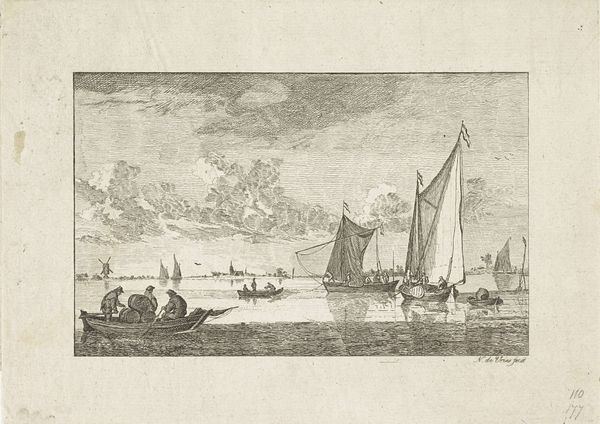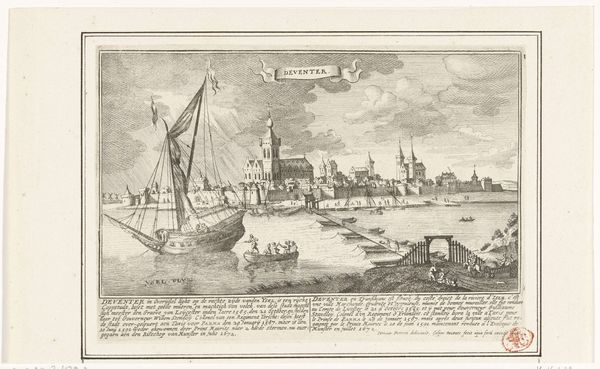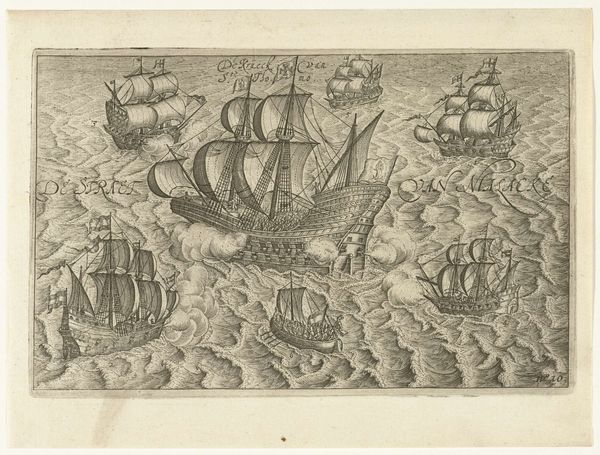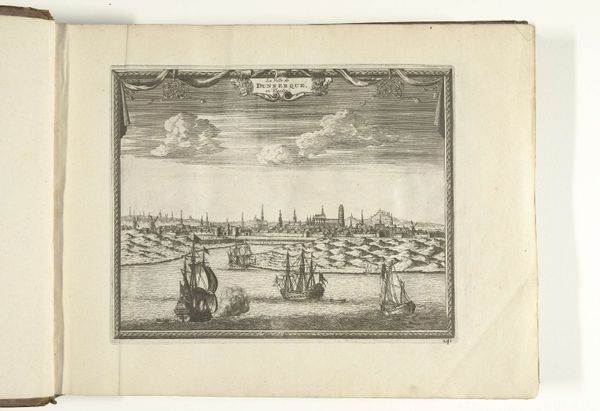
print, engraving
#
baroque
#
dutch-golden-age
# print
#
old engraving style
#
landscape
#
line
#
cityscape
#
engraving
Dimensions: height 105 mm, width 170 mm
Copyright: Rijks Museum: Open Domain
Curator: This print, attributed to Adriaen Matham, depicts Ships Near the Island of Hormuz and dates back to between 1632 and 1646. The scene captures a cityscape in the Dutch Golden Age, rendered in a distinctive line style. Editor: It’s remarkably detailed, almost photographic. The receding ships, the buildings nestled against the coastline… there’s a stark elegance to it, a quiet monumentality despite the medium. Curator: It’s important to remember that this is an engraving. Matham's skillful employment of the engraver’s tool, meticulously incising lines into the copper plate to define form and create tonal variation. The process of engraving itself speaks to early modern print culture and knowledge dissemination. Editor: Observe the interplay of light and shadow, the linear perspective achieved through subtle gradations of line weight. The buildings huddled in a compact series, offset against the water and the ships, creating a study in shapes. Curator: Hormuz was a significant trading center, so this print underscores Dutch maritime power and trade networks in the 17th century. The depiction isn't just aesthetic; it is intrinsically tied to material realities—the labor of sailors, the commodities being transported, and the geopolitical tensions inherent in global commerce. Editor: The miniature map is especially striking. It orients the viewer, anchoring this image of commerce within a geography both real and symbolic. Notice the waves rendered with such consistency—rhythmic repetitions creating a certain texture. Curator: The act of reproducing images like these meant access to information, expanding audiences, creating and circulating particular versions of ‘truth’. Prints were crucial components to an emergent consumer and capitalist culture. Editor: Looking closer, one gets the feeling of intense activity – of people moving through space and engaging in economic enterprise. It goes back to the arrangement of each component which gives this still scene some of its urgency and depth. Curator: Indeed, this engraving operates as both an aesthetic object and as an artifact documenting material conditions of empire and exchange. Editor: Ultimately, this print makes you aware of looking. Its formal choices are inseparable from the world it tries to make visible.
Comments
No comments
Be the first to comment and join the conversation on the ultimate creative platform.
